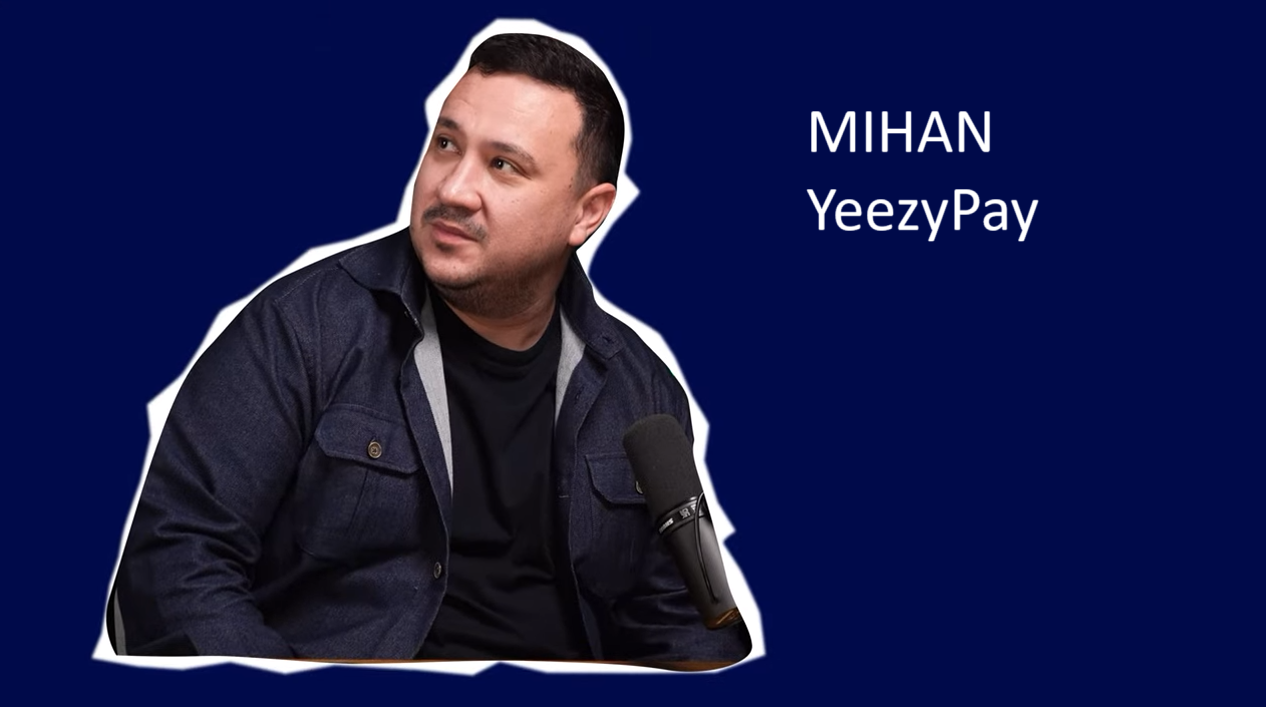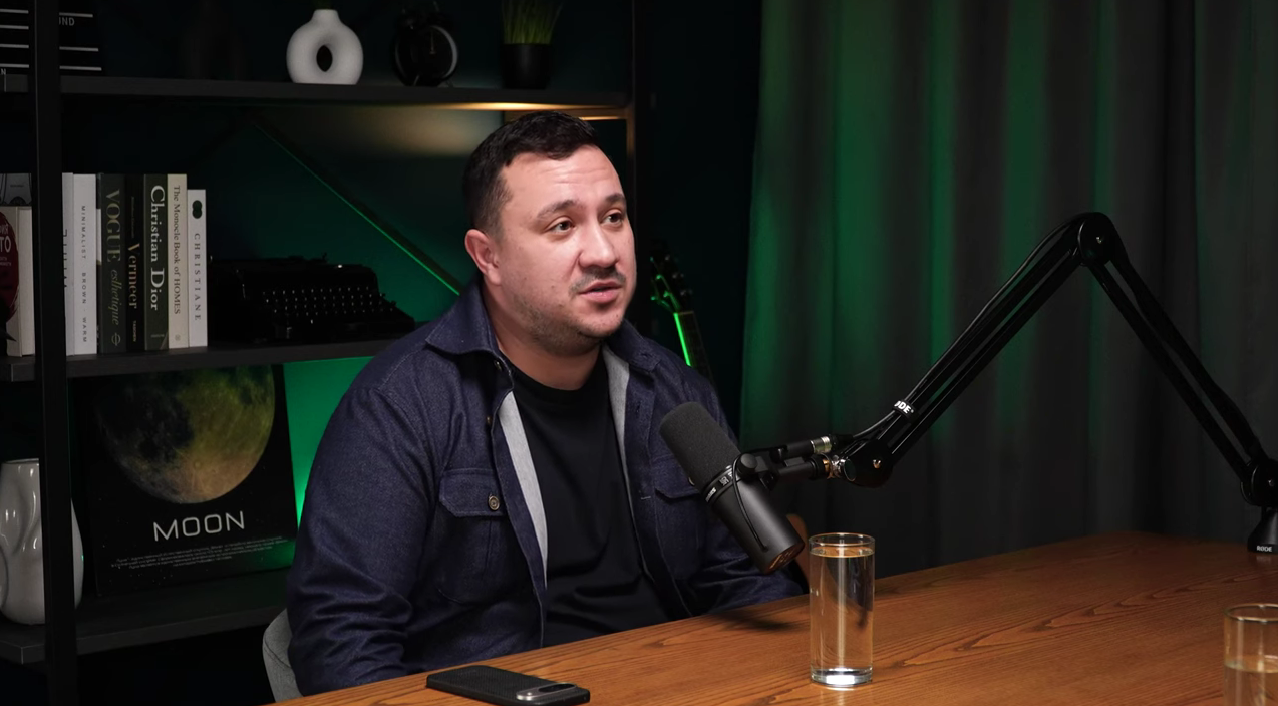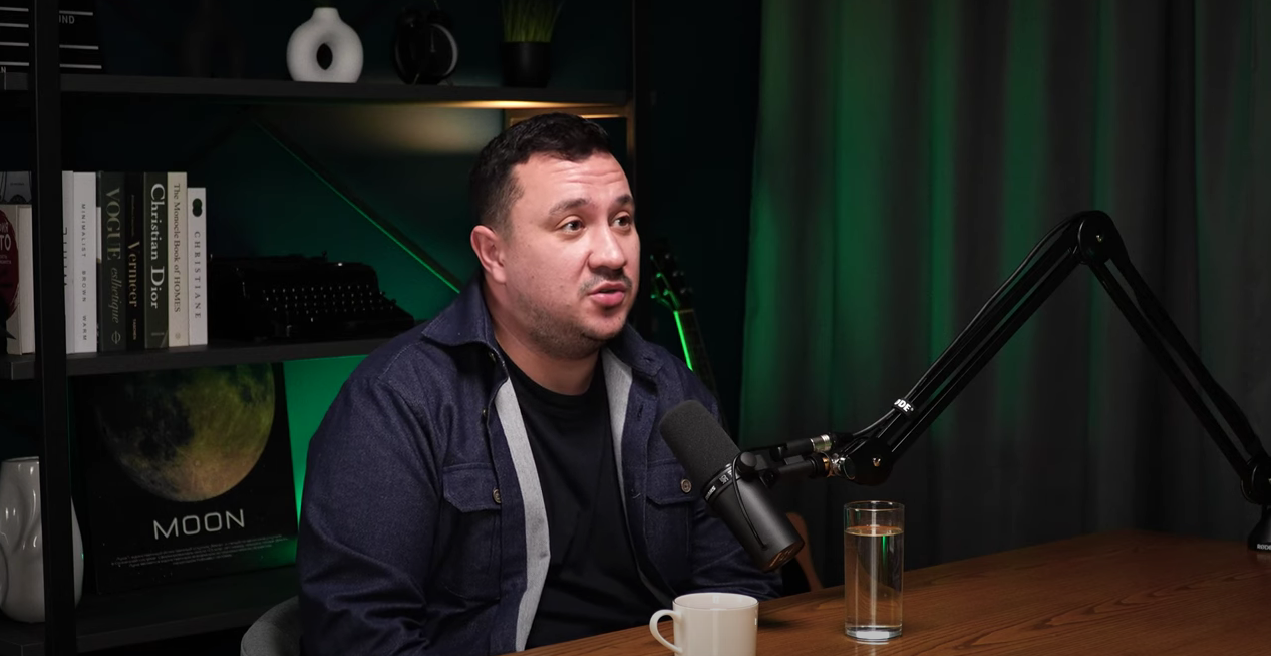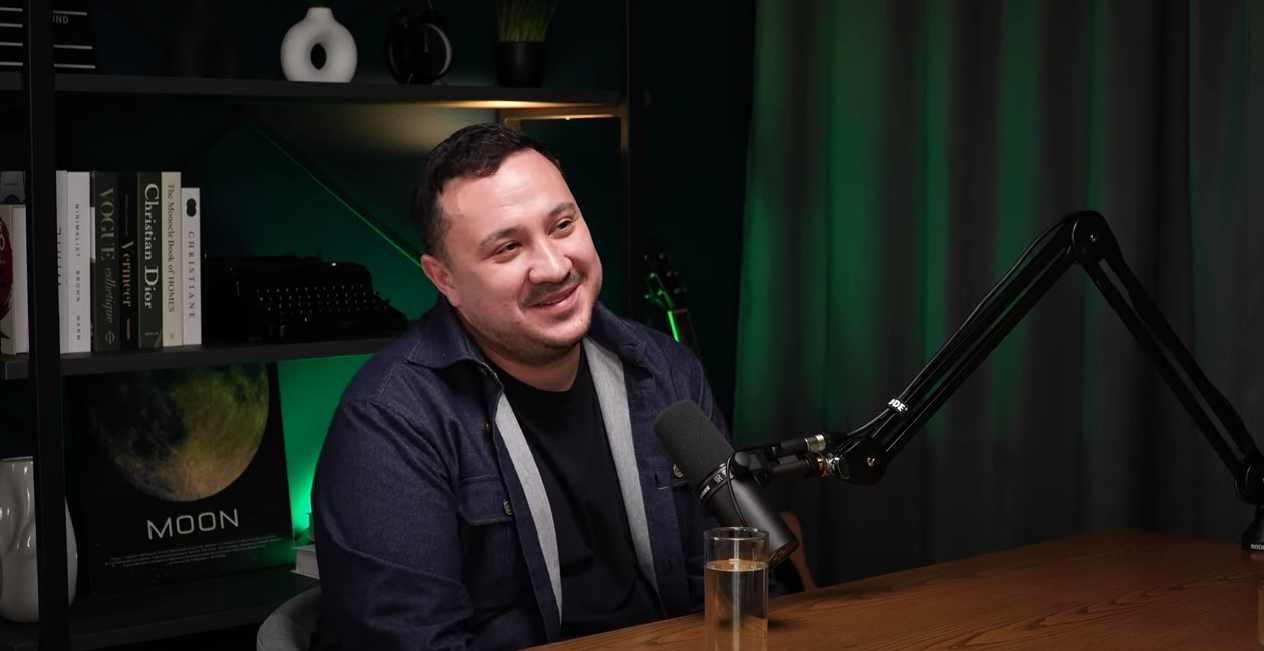At the end of January 2025, the LGaming channel released an interview with Mihan, who is the founder of YeezyPay, a well-known agency that rents out Google Ads trusted agency accounts. He has also launched a new virtual card issuing service.

In this article, we are going to look at some interesting takeaways from the interview that you will find valuable. These will include:
When it comes to affiliate marketing, the concept of "paid traffic" wasn’t really popular back then. I began by focusing on SEO traffic, creating my own websites, and promoting client websites across various categories. These categories could be broadly divided into adult and non-adult niches. The adult niche was related to sex work, and the audience from that niche was monetized through affiliate programs. On the other hand, the non-adult niche included client websites in whitehat businesses like plumbing, PVC windows, furniture, and so on.
I didn’t have any mentors at the time. Instead, I observed others on the forum whose posts caught my interest. They actively shared information about their earnings and experiences. There was even a kind of benchmark: if you were making $10,000, it meant you were doing well and living comfortably.
I started building my own websites in 2008. At first, I was able to monetize the traffic with pop ads to make a small profit margin. Then, SMS affiliate programs and teaser networks emerged, which allowed for much better audience conversion.

I didn't run paid ads because I was only working with my own organic audience. In fact, I didn’t even know what the advertising dashboards of platforms like Facebook, Google, and similar sites looked like.
Starting out as a solo affiliate can be quite challenging now, which is why it’s often easier to come together in teams. By doing so, team members can divide responsibilities, pool budgets, and ensure that each participant focuses on their specific tasks. Additionally, the community is evolving beyond just making money and is shifting towards a more professional approach. This means that people are gradually moving away from blackhat and grayhat marketing tactics and now striving to build long-term relationships with advertisers, even if the profit margins are lower.
Of course, there are still those who still use blackhat and grayhat tactics to make high returns but this is done at the expense of their relationship with partners and their own reputation. However, this kind of approach is no longer the main priority in general.
The reason for this is straightforward: the risks have increased. In the past, the environment was different. For example, there was a situation involving a shaving advertiser. A Chinese advertiser entered the market with a large budget and a demand for installs, then publicly shared their offer without any controls in place. Affiliates sent traffic to this offer based on what they had, but after a couple of months, the advertiser ran out of budget and the offer was closed. Nowadays, such careless tactics are unlikely to be used by anyone.
Initially, we focused on creating the card service, and by mid-2022, we started exploring opportunities, searching for partners, and connecting with Google agencies. This led us to develop a service for renting trusted Google Ads agency accounts.
During this process, I realized how crucial networking is. Here’s a simple piece of advice: connect with people in the industry where you want to start your business. Some may offer valuable advice, while others can introduce you to the right contacts. For example, on one forum, we were connected with moderators from Google, who later shared ban logs with us. This list highlighted patterns that trigger bans on the platform, allowing us to address problematic areas and quickly restore banned accounts.
One reason we decided to offer account rentals was the increasing number of payment solutions. The market for payment solutions grew by 20–30%, and the number of card issuance services had long surpassed what was necessary for the market. Relying solely on a card service without diversifying risks can lead to financial troubles. Many people have failed in this space because it’s easy to experience cash flow issues and end up in debt.
By September 2022, we had automated the interface for working with Google Ads accounts, which set us apart from competitors. Other companies required filling out forms and providing extensive information to access an account. In contrast, with YeezyPay, the process of requesting an account, adding funds to it, and getting access to run ads on it can be done without a manager and with minimal effort.

Additionally, virtual credit card issuance services and account rentals generate different profit margins. For the payment service, the net profit is around 2–2.5%. This takes into account operational costs, technical expenses, and bank fees. It’s important to note that top buyers usually work on a reduced commission of about 4%, rather than the standard rate, so a profit margin of 2–2.5% is considered respectable. The ad account rental service is more profitable, with a net profit of approximately 7–10%.
When it comes to challenges, I would highlight three key areas: finding the right partners, ensuring data protection, and managing Merchant Category Codes (MCC).
The same principle applies to creating an account rental service. For example, we had a situation where one of our top clients was running ads through Google UAC. Everything was compliant with U.S. laws, the niche was whitehat, and the number of installs was impressive. However, suddenly, Google banned his account and Merchant Category Code (MCC). If we hadn’t maintained close communication with Google’s moderation team, we wouldn’t have been able to identify the specific reasons that triggered the ban or resolve the issue.
To protect our campaigns from potential fraudsters, we use two main strategies: a higher minimum deposit and a set spending requirement.
For YeezyPay, the minimum deposit to fund an account is $200. We found that when we lowered this minimum, the number of users trying to test the service or exploit it increased proportionally. The same goes for spending; we aim for a minimum ad spend of $2,000 to ensure that accounts become profitable. For each client, we create a separate chat where we either request them to increase their spending to this level or part ways with them if they cannot comply.
This situation is particularly tough for those who run with whitehat offers, as they can be impacted just because of the agency’s issues. This is especially problematic for those clients working with whitehat verticals, as they can get unfairly affected by the actions of others. In such cases, we often need to refund our clients so they can start over.
Sometimes, when a ban isn’t too severe, the data for some accounts remains intact. This allows us to transfer existing clients to a new agency while connecting new clients to these agencies from the start.

Why do bans happen? Answer simple: Bans usually occur because someone is running ads that violate the platform's rules. Moderators can identify profiles that are linked through the same IP address and block them in a chain reaction. The situation gets worse if live support gets involved; they review ads and may mistakenly flag innocent accounts. For example, if one advertiser uses a celebrity in ads for gambling products, and another uses the same celebrity for a whitehat product, the moderator might see this similarity and ban both accounts.
Starting a new MCC from scratch typically takes about 8 to 9 months. First, you need to set up a legal entity and a company. Then, you should run legitimate traffic for about six months, spending around $5,000 per month. After that, you can apply for a credit line and work on increasing your account limits. Google usually gives new companies a test limit of 50 manager accounts, but to raise that limit to 2,500 accounts, you’ll need approximately $500,000.
Doing all of this manually can be very time-consuming, which is why we use the Google API to automate many of our processes. However, obtaining Google API comes with its own challenges: you need to maintain a legal entity, run legitimate traffic, manage your spending carefully, and avoid any violations like running prohibited ads or drastically increasing spending in a short time.
As of 2025, launching campaigns on Google Ads from personal accounts is becoming increasingly difficult due to stricter moderation rules. This makes it easier to rent trusted accounts from specialized services. For our clients to run campaigns consistently, the service must have enough MCCs available, and we need to keep expanding our catalog. If one MCC gets banned, it can affect the campaigns of multiple clients. To prevent this risk, at YeezyPay, we continuously expand our list of MCCs. This way, if a ban happens, our clients can quickly switch to a different MCC without too much disruption.
Business growth should be gradual, so changes in budget, the number of ads, and other account adjustments should also occur slowly. This way, moderators will have fewer concerns. On the first day, avoid drastically increasing your spending, making many changes to account details, or uploading a large number of ad creatives all at once. Such unnatural actions can trigger a quick response from Google’s moderation team, leading to a ban.
Over three years, the YeezyPay team has developed a fully automated interface that allows users to top up their balance, allocate funds to the desired account, and get started with minimal involvement from a manager.
As advertising rules tighten, launching campaigns with a 300–400% ROI from personal accounts becomes more challenging. Personal accounts tend to get banned more frequently, have lower trust levels, and the reasons for their bans are not always clear.
Agency accounts, on the other hand, are issued to companies, allowing Google to treat them differently. They receive priority in moderation, and Google is more willing to point out errors that cause ads to be rejected. Experienced affiliates often opt for Google Ads agency accounts provided by YeezyPay. With a commission starting at 5% and a minimum deposit of $200, along with a knowledgeable support team, we can filter out inexperienced users, ensuring a smoother experience for all clients of the service.
In this article, we are going to look at some interesting takeaways from the interview that you will find valuable. These will include:
- How Mihan began earning money online
- What was affiliate marketing like in the past?
- The challenges involved in creating your own payment solution service
- The profit margin that can be made from virtual credit card issuing services as well as renting out agency accounts.
- Tips on how to minimize the chances of getting banned on Google Ads.
How Mihan began earning money online
I have been making money online for over 20 years now. I still remember the date I registered on the Searchengines forum back in 2005. Nowadays, that forum doesn’t really exist anymore, as its most popular section seemed to be just a chat area. A couple of years ago, the website was sold to a company in Cyprus. However, during my early days there, it was a place where I first started earning money and came across interesting discussions, so I consider it a starting point for my journey.When it comes to affiliate marketing, the concept of "paid traffic" wasn’t really popular back then. I began by focusing on SEO traffic, creating my own websites, and promoting client websites across various categories. These categories could be broadly divided into adult and non-adult niches. The adult niche was related to sex work, and the audience from that niche was monetized through affiliate programs. On the other hand, the non-adult niche included client websites in whitehat businesses like plumbing, PVC windows, furniture, and so on.
I didn’t have any mentors at the time. Instead, I observed others on the forum whose posts caught my interest. They actively shared information about their earnings and experiences. There was even a kind of benchmark: if you were making $10,000, it meant you were doing well and living comfortably.
I started building my own websites in 2008. At first, I was able to monetize the traffic with pop ads to make a small profit margin. Then, SMS affiliate programs and teaser networks emerged, which allowed for much better audience conversion.
I didn't run paid ads because I was only working with my own organic audience. In fact, I didn’t even know what the advertising dashboards of platforms like Facebook, Google, and similar sites looked like.
How do you compare paid advertising back then and now?
I believe that the concept of "affiliate marketing using paid traffic" as we understand it today became popular around 2013–2014. This means that this industry is relatively new. In recent years, I’ve noticed two main trends: people are working in teams, and affiliate marketing is becoming more organized.Starting out as a solo affiliate can be quite challenging now, which is why it’s often easier to come together in teams. By doing so, team members can divide responsibilities, pool budgets, and ensure that each participant focuses on their specific tasks. Additionally, the community is evolving beyond just making money and is shifting towards a more professional approach. This means that people are gradually moving away from blackhat and grayhat marketing tactics and now striving to build long-term relationships with advertisers, even if the profit margins are lower.
Of course, there are still those who still use blackhat and grayhat tactics to make high returns but this is done at the expense of their relationship with partners and their own reputation. However, this kind of approach is no longer the main priority in general.
The reason for this is straightforward: the risks have increased. In the past, the environment was different. For example, there was a situation involving a shaving advertiser. A Chinese advertiser entered the market with a large budget and a demand for installs, then publicly shared their offer without any controls in place. Affiliates sent traffic to this offer based on what they had, but after a couple of months, the advertiser ran out of budget and the offer was closed. Nowadays, such careless tactics are unlikely to be used by anyone.
What were the challenges you faced when creating your own payment solution service?
At the end of 2021, my partners and I decided to launch our own virtual card service called YeezyPay. Over the past couple of years, we’ve successfully established ourselves in the Eastern European market, and we are currently working on expanding to other regions.Initially, we focused on creating the card service, and by mid-2022, we started exploring opportunities, searching for partners, and connecting with Google agencies. This led us to develop a service for renting trusted Google Ads agency accounts.
During this process, I realized how crucial networking is. Here’s a simple piece of advice: connect with people in the industry where you want to start your business. Some may offer valuable advice, while others can introduce you to the right contacts. For example, on one forum, we were connected with moderators from Google, who later shared ban logs with us. This list highlighted patterns that trigger bans on the platform, allowing us to address problematic areas and quickly restore banned accounts.
One reason we decided to offer account rentals was the increasing number of payment solutions. The market for payment solutions grew by 20–30%, and the number of card issuance services had long surpassed what was necessary for the market. Relying solely on a card service without diversifying risks can lead to financial troubles. Many people have failed in this space because it’s easy to experience cash flow issues and end up in debt.
By September 2022, we had automated the interface for working with Google Ads accounts, which set us apart from competitors. Other companies required filling out forms and providing extensive information to access an account. In contrast, with YeezyPay, the process of requesting an account, adding funds to it, and getting access to run ads on it can be done without a manager and with minimal effort.
Additionally, virtual credit card issuance services and account rentals generate different profit margins. For the payment service, the net profit is around 2–2.5%. This takes into account operational costs, technical expenses, and bank fees. It’s important to note that top buyers usually work on a reduced commission of about 4%, rather than the standard rate, so a profit margin of 2–2.5% is considered respectable. The ad account rental service is more profitable, with a net profit of approximately 7–10%.
When it comes to challenges, I would highlight three key areas: finding the right partners, ensuring data protection, and managing Merchant Category Codes (MCC).
Partners
When setting up a card issuance service, you have to find a bank or a payment processor to partner with. There are many technical and legal details to consider, so it's important to assess the risks involved. Establishing mutually beneficial relationships with your partners will help you get support during challenging situations.The same principle applies to creating an account rental service. For example, we had a situation where one of our top clients was running ads through Google UAC. Everything was compliant with U.S. laws, the niche was whitehat, and the number of installs was impressive. However, suddenly, Google banned his account and Merchant Category Code (MCC). If we hadn’t maintained close communication with Google’s moderation team, we wouldn’t have been able to identify the specific reasons that triggered the ban or resolve the issue.
User protection
When it comes to user protection, particularly regarding data security and privacy, each company has its own methods for handling confidential information, including card details. At YeezyPay, we generally avoid accessing user accounts unless specifically requested by the clients, as it’s usually unnecessary. However, there are times when users ask our support team for advice on bids, creatives, or other issues. Fortunately, we have enough specialists on our team who can independently manage campaigns, so our clients always receive the help they need.To protect our campaigns from potential fraudsters, we use two main strategies: a higher minimum deposit and a set spending requirement.
For YeezyPay, the minimum deposit to fund an account is $200. We found that when we lowered this minimum, the number of users trying to test the service or exploit it increased proportionally. The same goes for spending; we aim for a minimum ad spend of $2,000 to ensure that accounts become profitable. For each client, we create a separate chat where we either request them to increase their spending to this level or part ways with them if they cannot comply.
MCC
On average, we lose one MCC each year. To manage this risk, we categorize our clients based on their verticals, which helps us spread out potential issues. When the agency’s MCC account gets fully banned, all the data is erased along with the data of the clients - and this affects their campaigns.This situation is particularly tough for those who run with whitehat offers, as they can be impacted just because of the agency’s issues. This is especially problematic for those clients working with whitehat verticals, as they can get unfairly affected by the actions of others. In such cases, we often need to refund our clients so they can start over.
Sometimes, when a ban isn’t too severe, the data for some accounts remains intact. This allows us to transfer existing clients to a new agency while connecting new clients to these agencies from the start.
Why do bans happen? Answer simple: Bans usually occur because someone is running ads that violate the platform's rules. Moderators can identify profiles that are linked through the same IP address and block them in a chain reaction. The situation gets worse if live support gets involved; they review ads and may mistakenly flag innocent accounts. For example, if one advertiser uses a celebrity in ads for gambling products, and another uses the same celebrity for a whitehat product, the moderator might see this similarity and ban both accounts.
Starting a new MCC from scratch typically takes about 8 to 9 months. First, you need to set up a legal entity and a company. Then, you should run legitimate traffic for about six months, spending around $5,000 per month. After that, you can apply for a credit line and work on increasing your account limits. Google usually gives new companies a test limit of 50 manager accounts, but to raise that limit to 2,500 accounts, you’ll need approximately $500,000.
Doing all of this manually can be very time-consuming, which is why we use the Google API to automate many of our processes. However, obtaining Google API comes with its own challenges: you need to maintain a legal entity, run legitimate traffic, manage your spending carefully, and avoid any violations like running prohibited ads or drastically increasing spending in a short time.
As of 2025, launching campaigns on Google Ads from personal accounts is becoming increasingly difficult due to stricter moderation rules. This makes it easier to rent trusted accounts from specialized services. For our clients to run campaigns consistently, the service must have enough MCCs available, and we need to keep expanding our catalog. If one MCC gets banned, it can affect the campaigns of multiple clients. To prevent this risk, at YeezyPay, we continuously expand our list of MCCs. This way, if a ban happens, our clients can quickly switch to a different MCC without too much disruption.
How to minimize account bans from Google Ads
It's important to note that the history of an account doesn’t impact the likelihood of bans as much as many believe. I recall instances where people purchased Google Ads accounts for $3,000 from an agency and were banned just a few hours later. At YeezyPay, we advise our clients to follow a simple rule: behave like a real person.Business growth should be gradual, so changes in budget, the number of ads, and other account adjustments should also occur slowly. This way, moderators will have fewer concerns. On the first day, avoid drastically increasing your spending, making many changes to account details, or uploading a large number of ad creatives all at once. Such unnatural actions can trigger a quick response from Google’s moderation team, leading to a ban.
Conclusion
Mihan plans to expand YeezyPay into international markets. Along with his team, he actively participates in forums, conferences, meetups, and other industry events. However, he is committed to maintaining quality over rapid growth. Therefore, he only partners with individuals he knows personally.Over three years, the YeezyPay team has developed a fully automated interface that allows users to top up their balance, allocate funds to the desired account, and get started with minimal involvement from a manager.
As advertising rules tighten, launching campaigns with a 300–400% ROI from personal accounts becomes more challenging. Personal accounts tend to get banned more frequently, have lower trust levels, and the reasons for their bans are not always clear.
Agency accounts, on the other hand, are issued to companies, allowing Google to treat them differently. They receive priority in moderation, and Google is more willing to point out errors that cause ads to be rejected. Experienced affiliates often opt for Google Ads agency accounts provided by YeezyPay. With a commission starting at 5% and a minimum deposit of $200, along with a knowledgeable support team, we can filter out inexperienced users, ensuring a smoother experience for all clients of the service.





